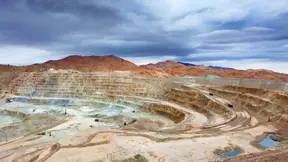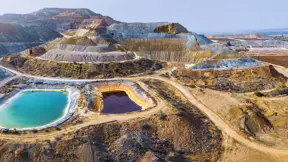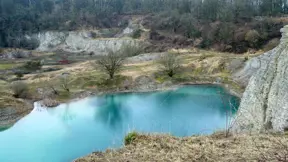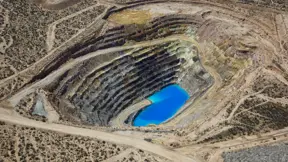
Ensuring dry mines in the Copperbelt
Water management is critical for mine operations in the African Copperbelt
The Central African Copperbelt is the largest copper-cobalt resource in the world. Ore is extracted in dozens of mines spread across Zambia and the southern Democratic Republic of Congo (DR Congo). Many of these mines have significant water challenges due to the high rainfall and the porous nature of the host ore bodies. DHI has been working in DR Congo for several years developing hydrology and dewatering models to support mine operations in this challenging part of the world.
Challenge
Water is critical to profitable operations at mine sites around the world. However, there is rarely just the right amount of water. Invariably, there is either too much or too little, or it is in the wrong places. The Central African Copperbelt is no exception. The Central African Copperbelt stretches across Zambia and into Katanga Province in DR Congo. This is the largest copper and cobalt resource in the world. Artisan mining for centuries has supplied the trade in copper ingots and bracelets across Africa.
However, the area has numerous water challenges – the Copperbelt contains some of the wettest mines in the world. The area has a highly seasonal, average rainfall of about 1200 mm per annum. The geology is extremely complex with faulting, folding and thrusting. The copper and cobalt are largely associated with solution deposition in highly permeable (even karstic) formations. This has led to numerous, very rich, relatively small deposits – often with serious water challenges.
Solution
Catchment hydrology
Understanding catchment hydrology is key to understanding water in the Copperbelt. This understanding is critical to efficient production.
DHI has developed a series of physics-based catchment hydrology models at this mine site using MIKE SHE. Physics-based models provide clear insight into the complex relationships and feedbacks between rainfall, infiltration, evapotranspiration, groundwater flow, runoff and stream flow.
The water balance is driven by the physical characteristics of the hydrology, the geology and the mine. Simple, lumped conceptual models that ignore the spatial and temporal relationships of these components are at serious risk of failing.
The MIKE SHE models of the catchment and the mine areas are able to capture the dynamics and spatial distribution of the groundwater recharge, by calculating actual evapotranspiration from available water and measured rainfall. This eliminates the need to make questionable guesses about groundwater recharge – the most critical boundary for a groundwater model. The integrated groundwater-surface water models provide a sound basis for the specialised, detailed groundwater dewatering models, as well as support decisions related to disposal of dewatering water, stream diversions and flood control.
Pit dewatering
The Copperbelt is notorious for very wet mines. High groundwater levels in the mine floor can hinder production and significantly increase blasting costs. Efficient dewatering is critical to maintaining production volumes and minimising costs. Yet, the vagaries of rural Central Africa and the complexity of the deposits mean that drilling dewatering wells is both expensive and time-consuming. Planning must be early, yet remain flexible. A detailed, accurate groundwater model is an important tool for mine managers in this process. DHI has developed a series of detailed groundwater models at this mine site using FEFLOW.
The FEFLOW dewatering models at this mine are being used in operations to plan for and locate new dewatering wells, as well as optimise pumping rates at existing wells. The subsurface geology is extracted directly from MineSight™ and Leapfrog™ geologic models delivered by the exploration group.
The FEFLOW models are very detailed around the mineralised areas where data density is highest, including all major faults and structures. Distributed groundwater recharge, as well as lateral boundary inflows, are taken from the MIKE SHE models. The models include planned bench evolution over time to facilitate the use of the calculated groundwater pressures for slope stability. Long term transient simulations are used to evaluate dewatering rates and depressurisation. FEPEST is being used to optimise the siting of monitoring locations and evaluate the uncertainty of dewatering levels for decision making.
Finally, local staff are being trained in the operation of the models. The models are then being delivered to the client on-site to facilitate the direct and timely use of the models in day-to-day decision making.
Client:
Location:
Democratic Republic of the Congo
Related SDG(s):
SDG 6: Ensure availability and sustainable management of water and sanitation for all
SDG 9: Build resilient infrastructure, promote inclusive and sustainable industrialization and foster innovation
Technology:
Results
- Provided useful insights for operational planning
- Provided more precise predictions for siting groundwater extraction wells
- Supported planning for disposal of dewatering water
About our client
An integrated, global mining company with operations in the Democratic Republic of Congo.
You may also like
How can we help?
With our global network of offices, we make sure you get the right answers to your local needs. Tell us about your water challenges and we will get back to you.



